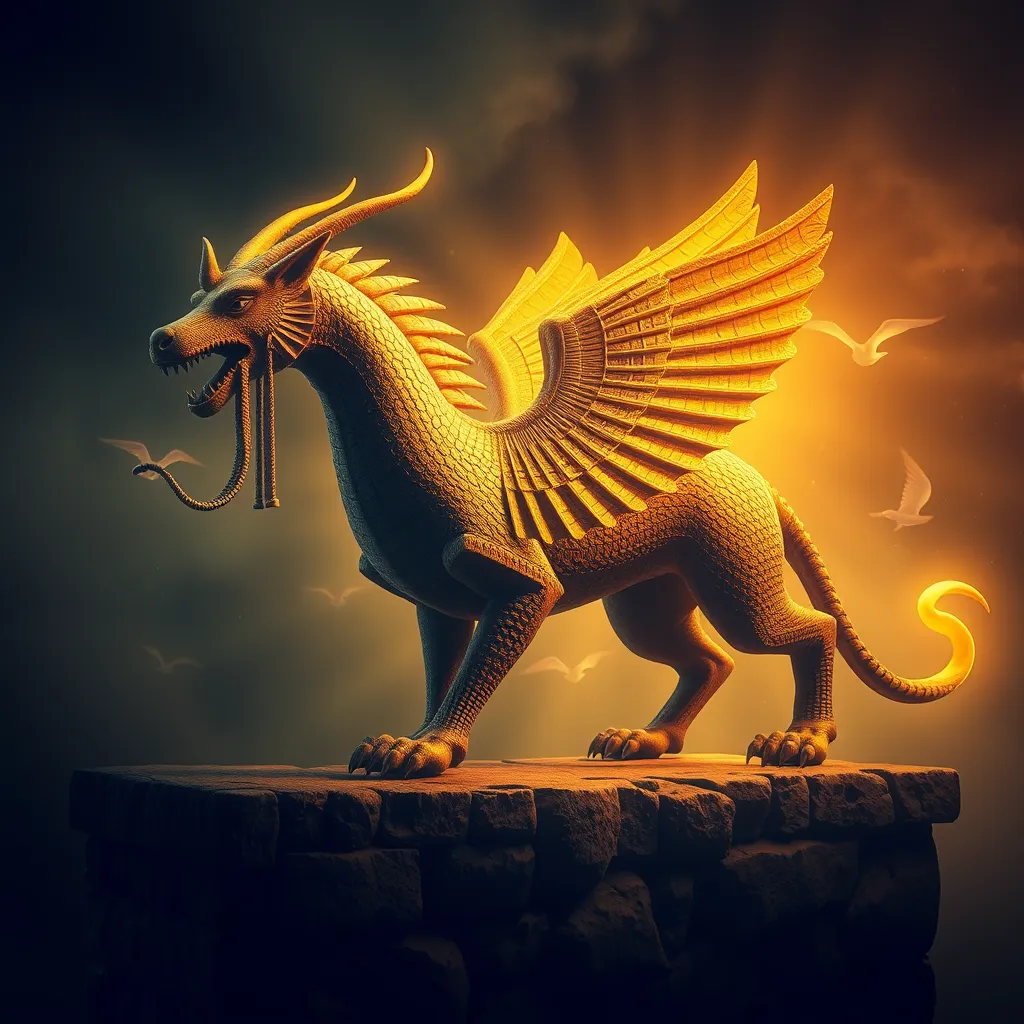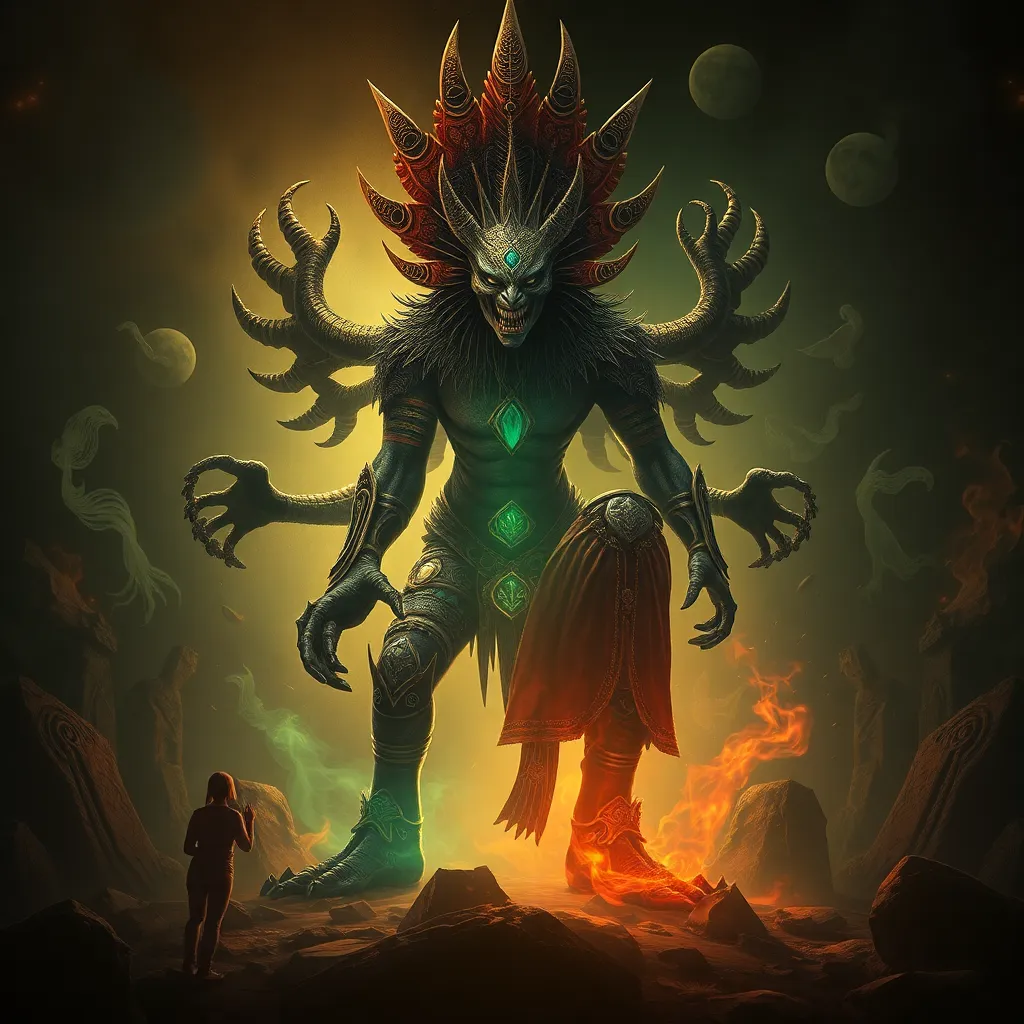The Chimera in Ancient Egypt: Mythological Beasts and Their Role in Rituals
I. Introduction
The Chimera, a fantastical creature with a blend of animal features, has fascinated cultures throughout history. In the context of ancient Egypt, this mythological beast held a unique position within the rich tapestry of Egyptian mythology and rituals.
Ancient Egyptian culture was steeped in symbolism, with mythological beasts playing crucial roles in their understanding of the world and the divine. The Chimera, embodying the fusion of various animalistic traits, represented the complexities of nature and the divine.
This article aims to explore the significance of the Chimera within ancient Egyptian rituals and mythology, examining its origins, connections to deities, and impact on society.
II. The Concept of the Chimera in Egyptian Mythology
The Chimera’s origins in Egyptian mythology are often linked to the broader practice of creating hybrid creatures that symbolize duality and complexity. This creature typically features the body of a lion, the head of a goat, and the tail of a serpent, presenting a formidable image.
Other mythological creatures in ancient Egypt, such as the Sphinx and the Griffin, share similar hybrid characteristics, symbolizing strength, protection, and the divine. The Chimera’s multifaceted nature allows it to embody various attributes, including chaos, power, and protection.
Symbolically, the Chimera represents the intermingling of different forces in the universe, reflecting the belief that the world is governed by both harmony and chaos.
III. The Chimera and its Connection to Egyptian Deities
Certain deities in Egyptian mythology are directly linked to the characteristics of the Chimera. For instance, the goddess Sekhmet, depicted as a lioness, embodies ferocity and protection, much like the fierce nature of the Chimera.
Hybrid creatures were essential in depicting divine attributes, allowing the ancients to express complex ideas about their gods. For example, the god Thoth, often represented with the head of an ibis, symbolizes wisdom and writing, showcasing the use of animal forms to convey specific divine characteristics.
Case studies of notable deities with Chimera-like traits include:
- Sekhmet: The lioness goddess representing war and healing.
- Horus: Often depicted with a falcon head, embodying kingship and protection.
- Ammit: A hybrid creature that devoured the souls of the unworthy, integrating elements of a lion, hippopotamus, and crocodile.
IV. Rituals Involving the Chimera
Rituals incorporating references to the Chimera often aimed to invoke protection or to symbolize the duality of life and death. These rituals were pivotal in ancient Egyptian society, providing a framework for understanding the relationship between humans and the divine.
The purpose of these rituals included:
- Seeking protection from chaos and evil forces.
- Ensuring a successful harvest or safe passage into the afterlife.
- Celebrating the divine attributes associated with hybrid creatures.
Archaeological evidence, such as temple inscriptions and ceremonial artifacts, supports the existence of these rituals, illustrating how the Chimera was woven into the fabric of religious life in ancient Egypt.
V. Artistic Representations of the Chimera
The Chimera’s depiction in ancient Egyptian art provides critical insights into the mythology and beliefs of the time. Artifacts, including sculptures, pottery, and wall paintings, often showcase the Chimera and other hybrid creatures.
The significance of artistic expression lies in its ability to convey complex narratives and beliefs surrounding mythological creatures. Over time, the representation of the Chimera evolved, reflecting changes in artistic styles and societal attitudes toward mythology.
Key artistic representations include:
- Reliefs depicting the Chimera in temple walls, symbolizing the protection of the gods.
- Funerary artifacts that included Chimera motifs, emphasizing their role in the afterlife.
- Amulets crafted in the shape of hybrid creatures, believed to offer protection to the wearer.
VI. The Chimera’s Influence on Ancient Egyptian Society
The Chimera-like figures had a profound influence on governance and leadership in ancient Egypt. Rulers often aligned themselves with these powerful symbols to legitimize their reign and present themselves as divine protectors of their people.
Culturally, the Chimera’s impact extended into literature and storytelling, where tales of hybrid creatures served as moral lessons or cautionary tales. These stories reinforced the importance of balance between chaos and order, a recurring theme in Egyptian mythology.
As a symbol of protection and power, the Chimera was often invoked in times of conflict, providing a sense of security and divine favor to the ancient Egyptians.
VII. The Legacy of the Chimera in Modern Interpretations
In contemporary culture, the Chimera continues to captivate the imagination. Its representation in modern media, including films, video games, and literature, showcases the enduring nature of this mythological beast.
Modern storytelling often reinterprets the Chimera, emphasizing themes of duality, transformation, and the struggle between chaos and order. This reflects a broader trend in mythological studies, where ancient symbols are re-examined and re-contextualized to address contemporary issues.
The Chimera’s legacy also highlights the importance of mythological studies in understanding the cultural and historical contexts of ancient societies, demonstrating how these ancient beliefs continue to resonate today.
VIII. Conclusion
In summary, the Chimera holds a significant place within the mythology and rituals of ancient Egypt. Its multifaceted nature allowed it to embody various divine attributes and served as a powerful symbol of protection and power.
Reflecting on the significance of the Chimera provides valuable insights into the complexities of ancient Egyptian beliefs and their understanding of the world around them. Further research into mythological beasts across different cultures could deepen our understanding of humanity’s shared narrative and the universal themes that connect us all.




